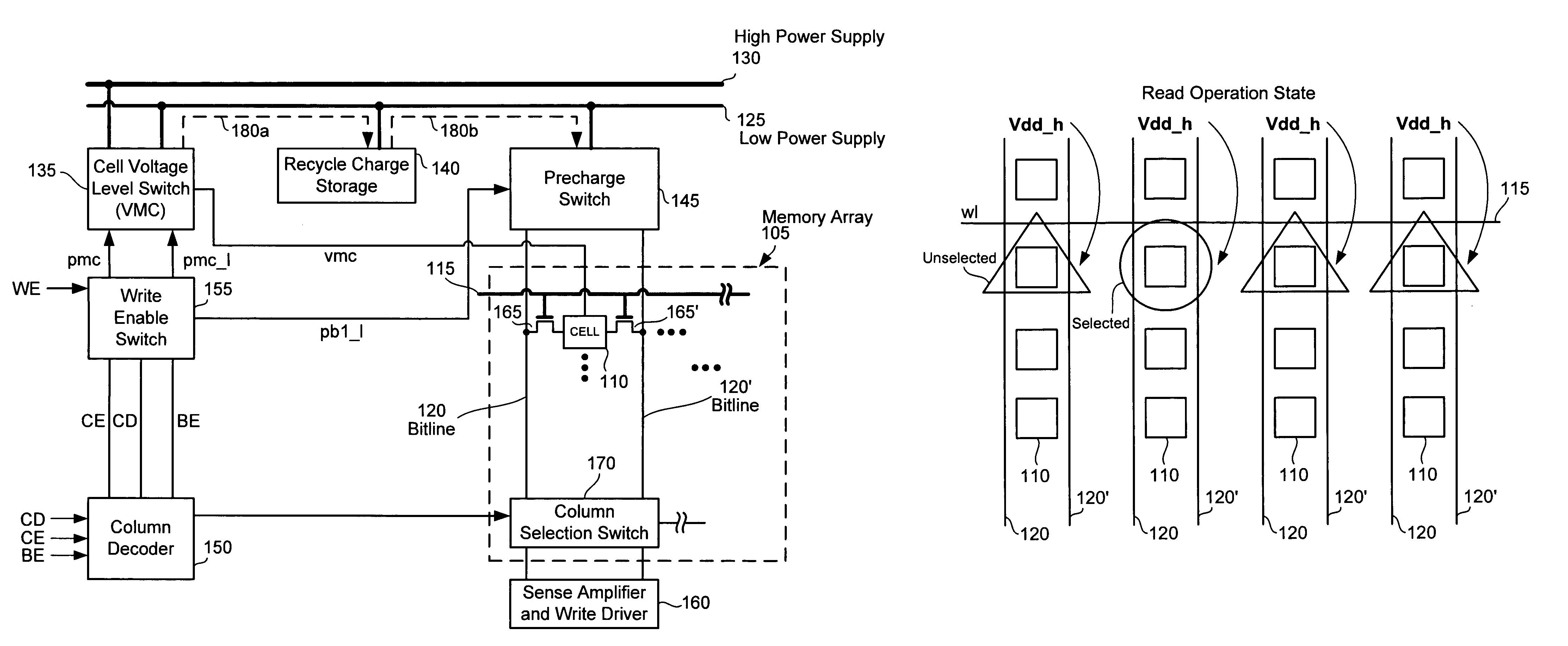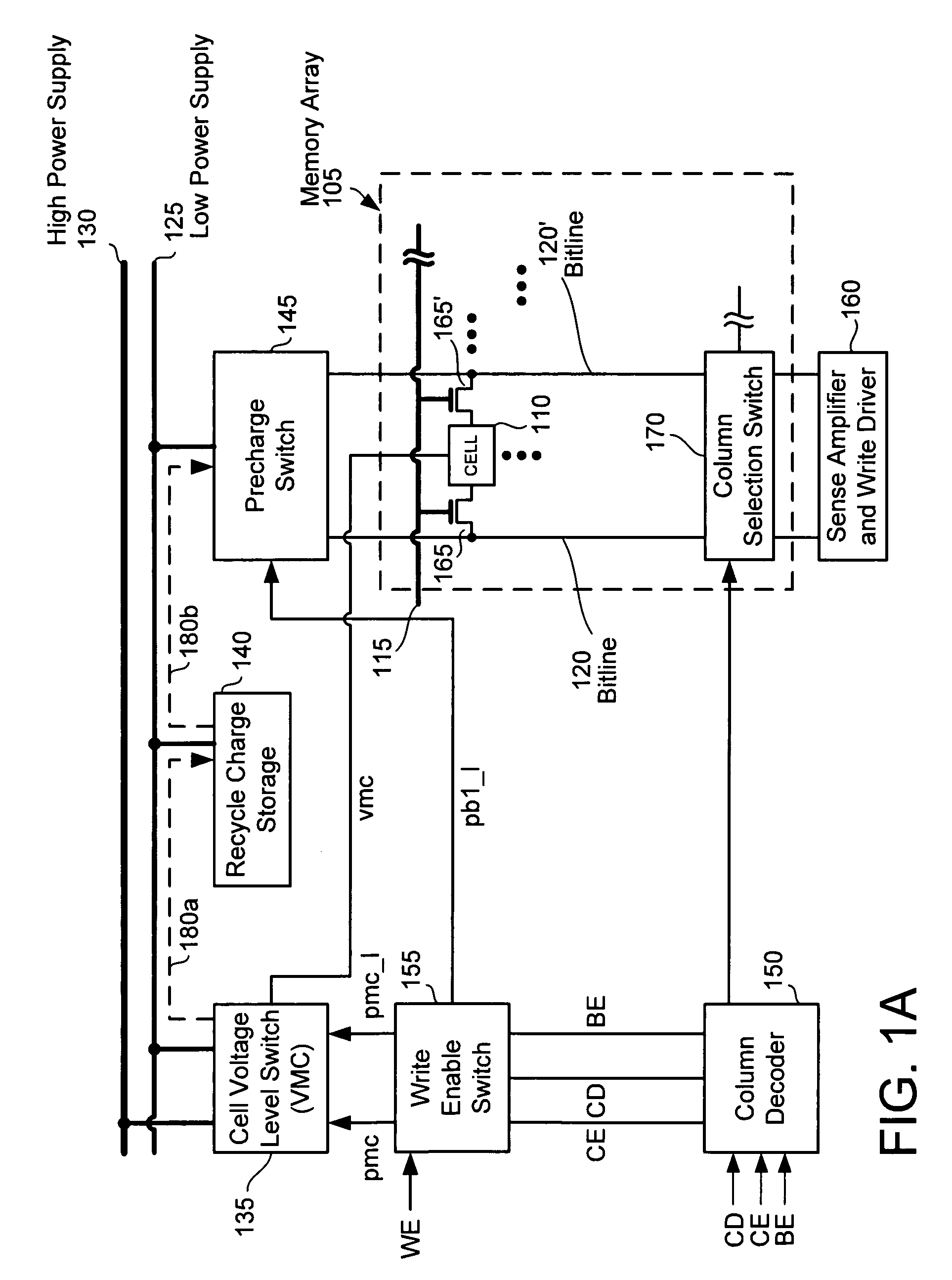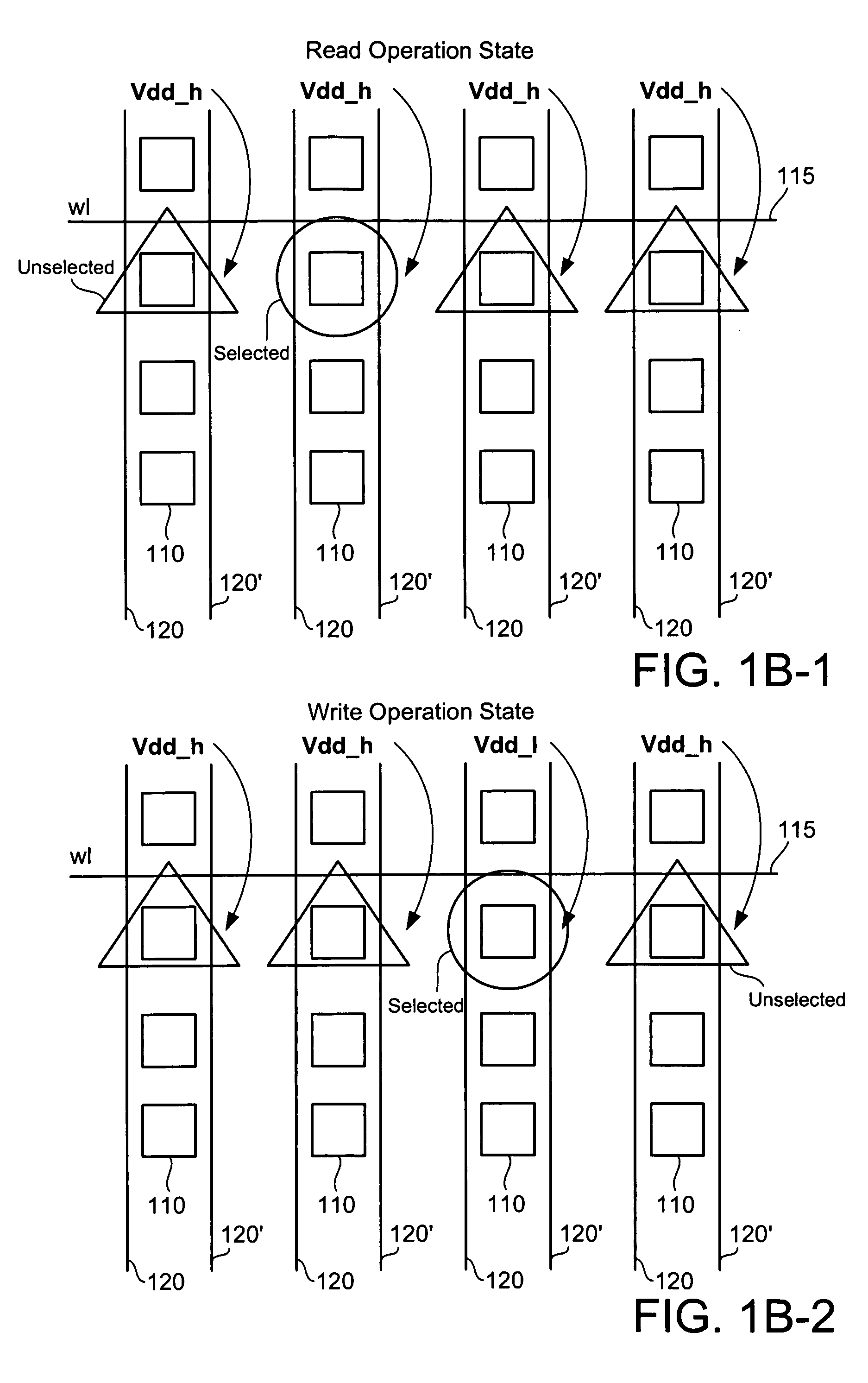Write and read assist circuit for SRAM with power recycling
a technology of assist circuit and sram, applied in the field of sram, can solve the problems of degrading vtrip, increasing the difficulty of achieving stable sram performance, and affecting the stability of snm,
- Summary
- Abstract
- Description
- Claims
- Application Information
AI Technical Summary
Benefits of technology
Problems solved by technology
Method used
Image
Examples
Embodiment Construction
[0022]The following embodiments describe an apparatus and method for reading and writing data into a memory array and using charge recycling. It will be obvious, however, to one skilled in the art, that the present invention may be practiced without some or all of these specific details. In other instances, well known process operations have not been described in detail in order not to unnecessarily obscure the present invention.
[0023]One design technique to improve the Vtrip margin during the write operation is reducing the power supply voltage to the SRAM cells 110, but lowering the SRAM power supply voltage also reduces the SRAM SNM margin. Conversely, increasing the power supply voltage to the SRAM cells 110 improves the SNM margin, which is important for the read operation. Implementation of the claimed design technique uses two power supply voltages 125 and 130, selectively applied to the SRAM cells 110 during read and write operations. Switches are used to control which power...
PUM
 Login to View More
Login to View More Abstract
Description
Claims
Application Information
 Login to View More
Login to View More - R&D
- Intellectual Property
- Life Sciences
- Materials
- Tech Scout
- Unparalleled Data Quality
- Higher Quality Content
- 60% Fewer Hallucinations
Browse by: Latest US Patents, China's latest patents, Technical Efficacy Thesaurus, Application Domain, Technology Topic, Popular Technical Reports.
© 2025 PatSnap. All rights reserved.Legal|Privacy policy|Modern Slavery Act Transparency Statement|Sitemap|About US| Contact US: help@patsnap.com



